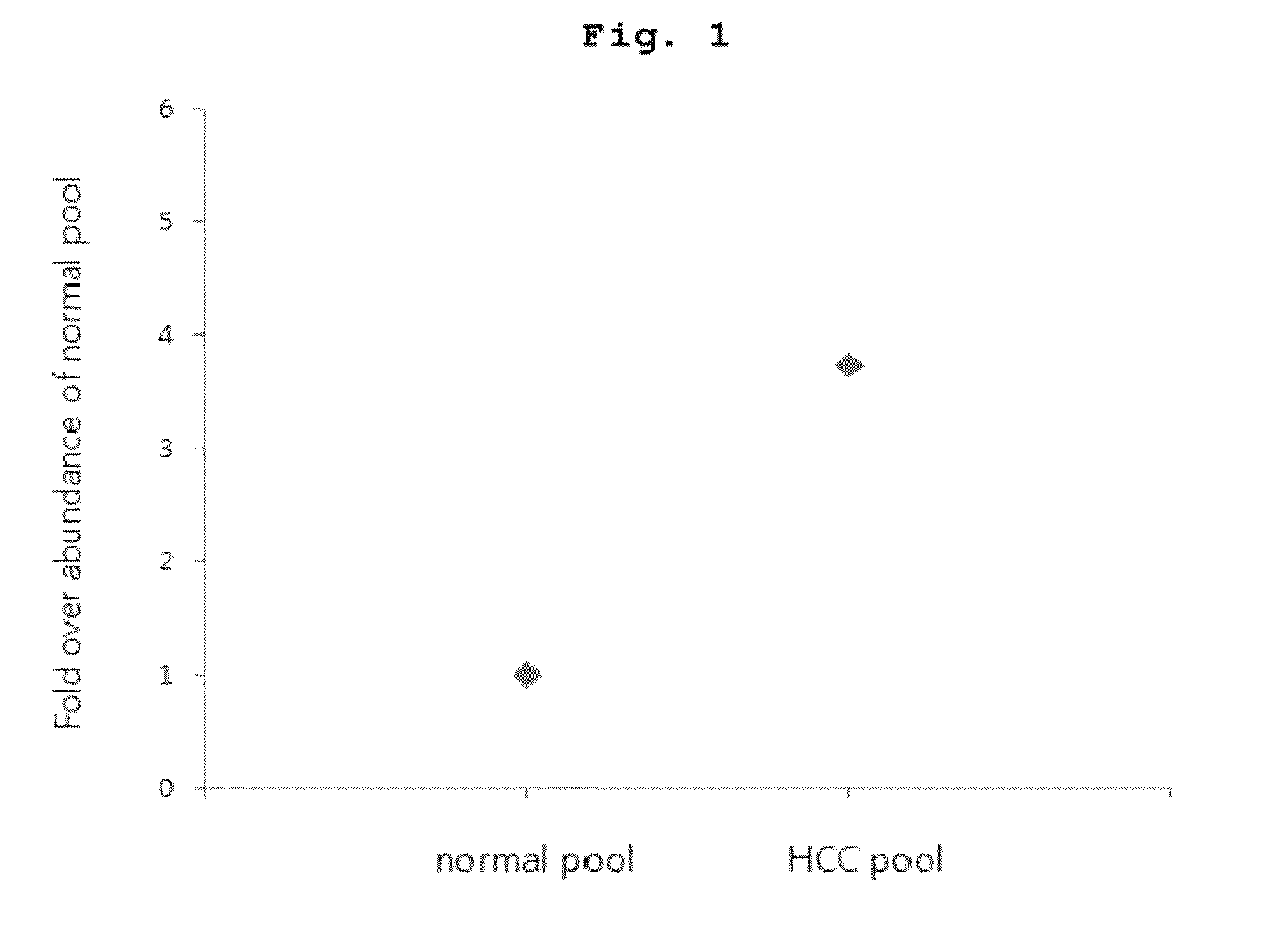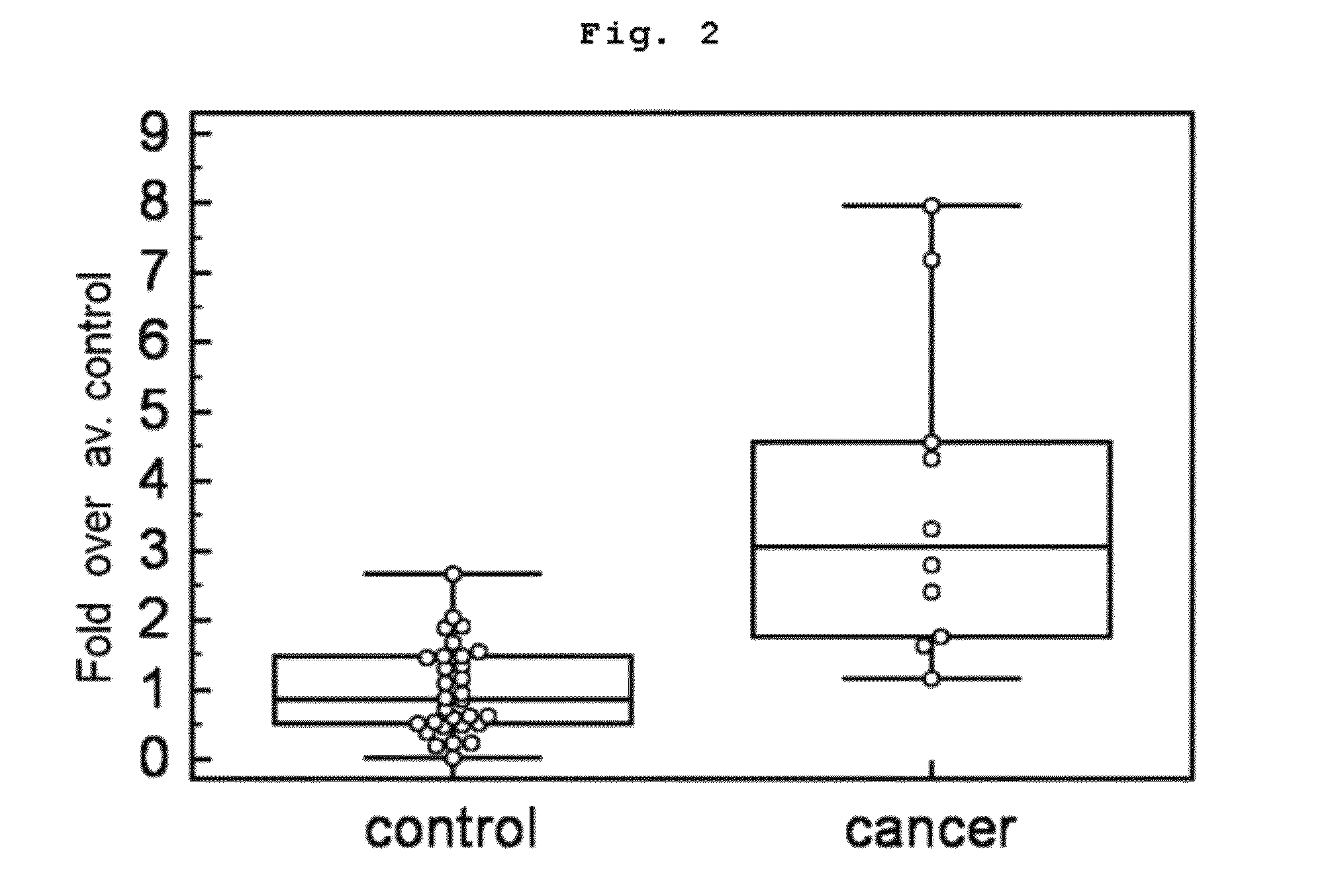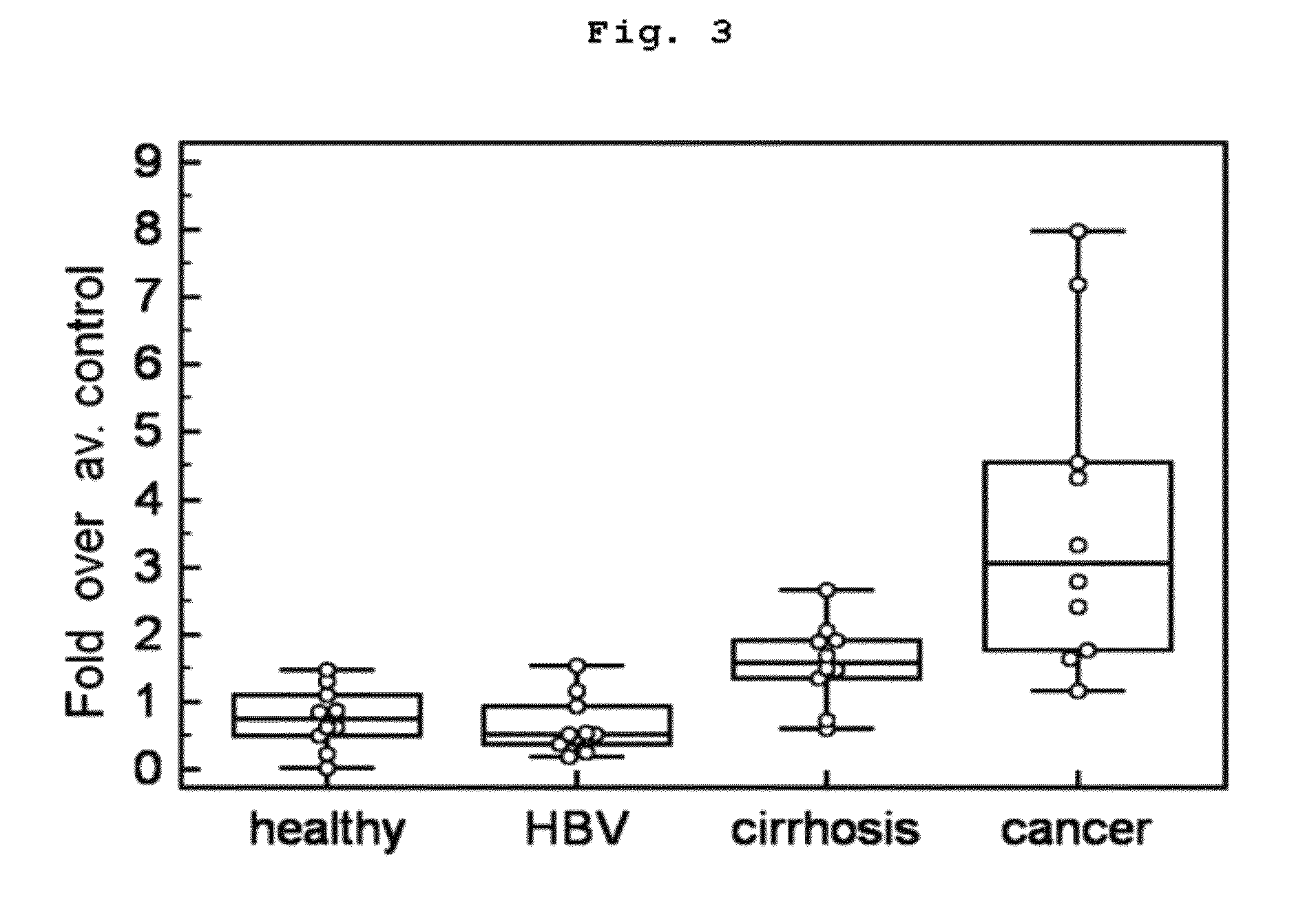Method for diagnosing cancer using lectin
a cancer and lectin technology, applied in the field of cancer diagnosis, can solve the problems of difficult to obtain antibodies for all glycoproteins being discovered on a large scale, many limitations in analysis speed, quantitative reliability, etc., and achieve the effect of easy and quick
- Summary
- Abstract
- Description
- Claims
- Application Information
AI Technical Summary
Benefits of technology
Problems solved by technology
Method used
Image
Examples
example 1
Sample Preparation
[0102]HCC blood samples (pooled cancer plasma) were prepared by mixing blood samples of ten patients clinically confirmed to have HCC and normal comparative blood samples (pooled control plasma) were prepared by mixing blood samples of ten healthy people whose clinical findings are that there are no cancer-related diseases. Using AAL (aleuria aurantia lectin) which shows a selective affinity for glycoproteins having a fucose glycan, AAL-selective protein samples were isolated from the same amount of blood samples of the HCC patient group and the normal control group. Isolated samples were hydrolyzed, and peptide samples of the HCC patient group and the normal control group were obtained. As for a support for fixing lectins, various kinds of supports, including agarose beads, magnetic beads, etc. may be used. For the analysis of the present clinical blood samples, strepavidine-magnetic beads were used for fixing lectins. That is, respective blood samples of the HCC ...
example 2
Selection of Candidate Markers by Peptide Analysis
[0103]In order to analyze samples prepared in the sample preparation in , LC / ESI-MS / MS was performed using HPLC (high-performance liquid chromatography; trap column: C18, 5 um, 300 um×5 mm; analytical column: C18, 5 um, 75 um×10 cm) tandem LTQ-FT mass spectrometer (Thermo Finnigan), the electrospray ionization (ESI) mass spectrometer. Part of peptide samples prepared by trypsin hydrolysis of each protein sample was diluted 10-fold and 10 μL aliquots were injected into HPLC / mass spectrometer.
[0104]Based on the mass analysis result, hydrolyzed peptides of proteins enriched by AAL can be confirmed through a search engine, such as MASCOT, SEQUEST, etc. Significant proteins were searched from the peptides obtained from LC / ESI-MS / MS analysis and analysis frequency thereof, etc. Glycosylation and cancer-related possibility, etc. of searched proteins were confirmed by investigating protein databases, including Swiss-Prot DB, NCBI nr DB, etc....
example 3
Identification of Marker Peptide using Mass Analysis
[0108]For MRM quantification of the marker peptide of SEQ ID NO:6 as a representative example among marker peptides of the above [Table 1], isotope-labeled standard of the peptide was prepared and added equally to respective peptide samples of pooled cancer plasma and pooled control plasma which were prepared in as an internal standard for a quantitative analysis. The result of LC / MRM quantitative mass analysis in which the marker peptide of SEQ ID NO:6 was repeatedly quantified for each sample was shown in FIG. 1. That is, it was confirmed that the marker peptide of SEQ ID NO:6 of the HCC patient group was quantitated 3.7 times greater than that of the normal control group.
[0109]When the concentration of target protein is very low in blood, target marker peptide may not be detected directly from the prepared peptide samples according to the above MRM quantitative analysis. In that case, according to a well-known method, quantitat...
PUM
| Property | Measurement | Unit |
|---|---|---|
| concentration | aaaaa | aaaaa |
| liquid chromatography- | aaaaa | aaaaa |
| mass | aaaaa | aaaaa |
Abstract
Description
Claims
Application Information
 Login to View More
Login to View More - R&D
- Intellectual Property
- Life Sciences
- Materials
- Tech Scout
- Unparalleled Data Quality
- Higher Quality Content
- 60% Fewer Hallucinations
Browse by: Latest US Patents, China's latest patents, Technical Efficacy Thesaurus, Application Domain, Technology Topic, Popular Technical Reports.
© 2025 PatSnap. All rights reserved.Legal|Privacy policy|Modern Slavery Act Transparency Statement|Sitemap|About US| Contact US: help@patsnap.com



